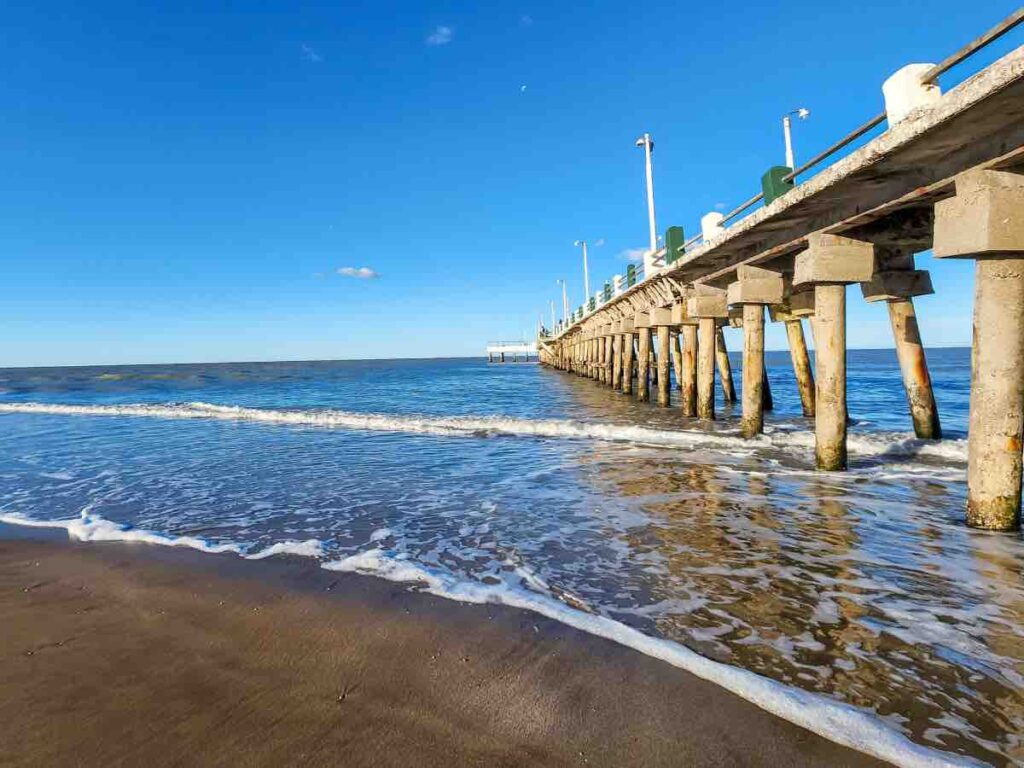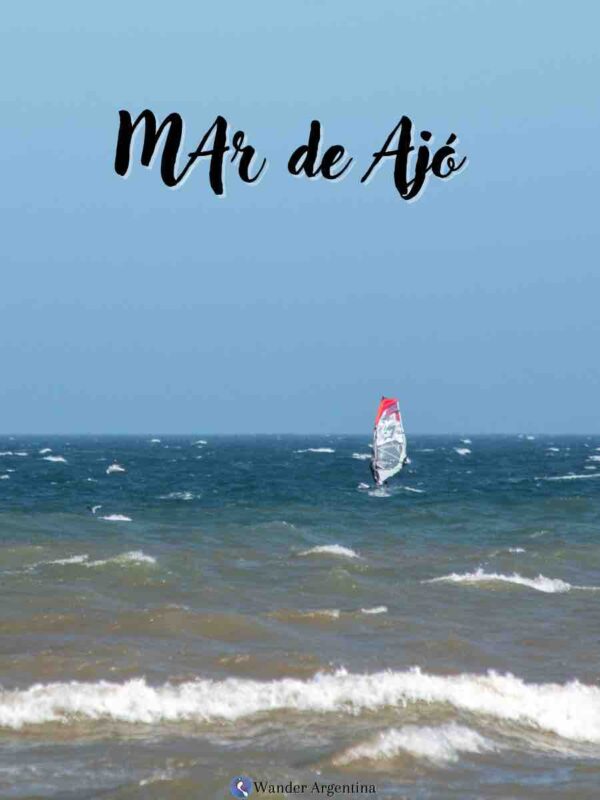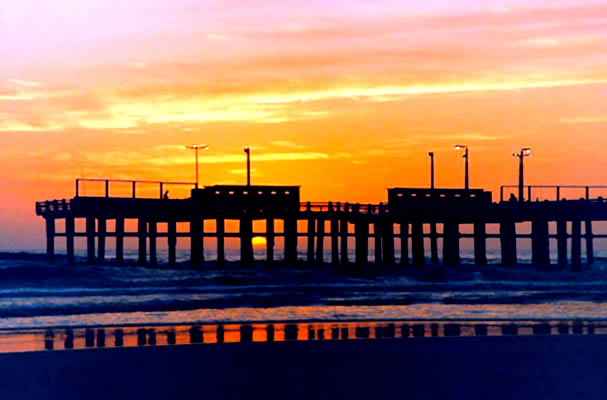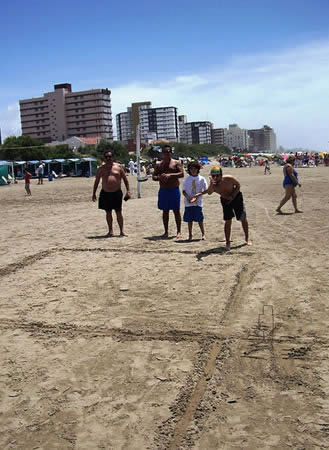Mar de Ajó — Anyone arriving in Buenos Aires for the first time during January will find themselves in an empty metropolis and questioning, ‘Where are all the people?’

The answer is that everyone clears out of the sweltering city in the summer and heads to the beach.
The seaside city of Mar del Plata is the over-crowded beach of choice for many Argentines who don’t seem to want to break away from the Buenos Aires bustle, but there are other, more laid-back towns to choose from along Argentina’s sprawling coastline.
Mar de Ajó, a five-hour bus ride from the big city is one alternate seaside choice that you probably won’t find listed in your guidebook.
Near the tip of the Atlantic coast in Buenos Aires province, this 19th-century fishing village was officially founded in 1935 when tourism first arrived in the area.
It makes one of the 14 unique coastal towns with 96 kilometers of beaches that make up the ‘Partido de la Costa,’ or Coast District of the Buenos Aires province.
Today families of middle-class porteños (as Buenos Aires’ residents are known) looking for a more relaxed seaside refuge come here to wind down during the summer months.
In the last ten years, with increased migration from other provinces and the addition of the Atlántida Argentina University here, Mar de Ajó’s populace has swollen from 13,000 to 25,000.
The Town: Garish but Endearing
With its 1960-70s seaside town vibe, Mar de Ajó is admittedly tacky in places, but that’s part of its scrappy allure.
The buildings are a combination of old hotels, apartment blocks and lovely little shacks.
As with many of Argentina’s less-expensive beach destinations, the shopping and restaurant precinct is decidedly tawdry.
At dusk, the main drag becomes a pedestrian-only affair, jam-packed with people looking to be fed and entertained.
There is a good mix of restaurants, gaming arcades, pizza parlors and ice cream shops, replete with street performers, a cinema, a theater and a casino/bingo hall. Accommodation and food prices are just slightly higher than in the city of Buenos Aires.
Mar de Ajó’s Ship Graveyard
Before the 1914 construction of the Panama Canal, Argentina’s Pacific coastline saw a lot of navel traffic with boats headed for the Strait of Magellan.
Many who ventured too close to the coast found themselves run aground by the strong winds at Mar de Ajó and now form part of the town’s ‘ship graveyard.’
The most famous wreckage here is the Margaretha, a German vessel that ran aground in 1880.
For many years Mar de Ajó was known as Playa La Margarita, in honor of the battered tanker.
The Margeretha’s remnants can still be seen sticking out of the sand at low tide.
Another Mar de Ajó attraction is the town’s large pier where fishermen catch Southern Kingcroaker, Seabass and Stingray to fry up for dinner.

The Beach Scene
Regular beachgoers bring their own umbrellas and chairs to the shore here – or, as in Mar de Plata — lease private tents or carpas by the day, week or even month.
A revealing bathing suit is the dress code of choice, no matter what the size or shape of the body, and the deeper, more pre-cancerous-looking the tan, the better.
As at most Argentine beaches yerba mate (Argentinean tea pronounced mah-tay) is the beverage of choice throughout the day, prompting hot water sellers and churro-doughnut vendors to roam the sands in droves.
Groups of weathered men play Tejo, a beach game similar to the Italian game of Bocce, except that rather than rolling balls, flat wooden discs are used.
The idea is to try and get the discs as close to the small white jack as possible.
Although played casually on the beach with the ‘court’ drawn out on the sand, you will see that Tejo can be taken as seriously as the World Cup Finals.
Compared to its more upscale counterpart, Mar del Plata, the beaches at Mar de Ajó are marginally cleaner and a lot less crowded, with some of the fine beige sand visible between all the sun worshipers.
The cool Atlantic water provides some respite from the sizzling sun, and here it is slightly less bone-chillingly cold than in Mar de Plata, as it sits 157km further north up the coast.
The wind often creates swell making for some modest surfing, challenging swimming, and fun kite and bodysurfing.
Mar de Ajó is evidence that one cannot experience Porteño culture by only visiting Argentina’s capital; here you’ll see another side to the urban dwellers, who really can let the city chaos slip away with the sea breeze.
Getting to Mar de Ajo from Buenos Aires
-By bus from Buenos Aires:
Mar de Ajó is a five-hour bus ride from Buenos Aires and several major bus companies have multiple trips per day.
-Chevallier
Retiro Station
Tel: 4000-5255
-Condor Estrella
Retiro Station
Tel: 4313-1700
-By Car from Buenos Aires:
Take 9 de Julio south until reaching the Buenos Aires-La Plata Freeway.
At kilometer 37, take the exit to the right until you reach the Gutiérrez roundabout, where you will take Route 2 until you reach Route 63.
When you reach the end of Route 63, at Esquina de Crotto, turn right onto Route 11 which will take you to the coastal town of San Clemente.
From there, head south down the coastal road until reaching Mar de Ajó.
Things to do in Mar de Ajó
Lo de Maria Lucrecia
Camino a Pavón, a 3000 mts. from the Rotonda de Mar de Ajó
Tel: (02257) 420-009
– An educational organic animal farm popular with kids; offering horseback rides and tours.
Museum and Historic Archive of Mar de Ajó
Lebensohn Nº 566
No telephone
• Hours: vary throughout the year; Wed-Sun: 5:00-7:00 p.m.
– Check out old photos of the town, learn about the ships that ran aground here, and see antiques and fossils.
Mar de Ajó Casino
Irigoyen at Espora
Tel: (2257) 420-742
• Roulette, Blackjack and 80 slot machines
Annual Events in Mar de Ajo

National Festival of the White Mouth Croaker
In November or early December Mar de Ajó kicks of the season with the Fiesta Nacional de la Corvina Rubia (National Festival of the White Mouth Croaker).
The festival starts with the arrival of the white-mouth croaker fish, known locally as ‘corvina rubia’ to the coastal areas.
The event includes a fishing competition with cash prices, cultural activities, food, and festivities centered around this fish species.
Mar de Ajo’s Birthday Celebration
Like most towns in Argentina Mar de Ajo has a big birthday celebration.
The town was founded on December 19, and the party is on the closest weekend, coinciding with the beginning of the summer season.
Places to Stay in Mar de Ajo
Hotels
There are range of hotels in Mar de Ajó with prices starting with a basic one-star hotel such as at Hotel de Pescador.
Most of the hotels here are two or three stars but 140 meters from the beach is the four-star, highly rated Gran Hotel Verona.
For longer stays, it may make more sense to rent an apart-hotel such as Complejo Dorin or check listings on the apps.
Hostels/ Hosterías
Mar de Ajó is a family vacation spot so there aren’t many hostels but for hostel-type prices look for ‘hosterías’.
One you can try is the rather run-down but amusingly named, Los Sauces.
Hospedaje Los Sauces
Montevideo 586
Tel: (02257) 421-476
Glamping & Camping
Beach camping is a long-held tradition for many Argentine families who vacation on the coast, and there are a total of seven camping grounds in the area.
Nuevo Atlantis, five kilometers south accommodates campers, trailers and RV’s although the prices are a bit steep, depending on the number of people, the season and length of stay.
Some of the one-star hotels in town have similar prices.
Nuevo Atlantis Camp Site
F. de las Carreras y Halbach
Tel. (02257) 422145
—by Carly Pocock




